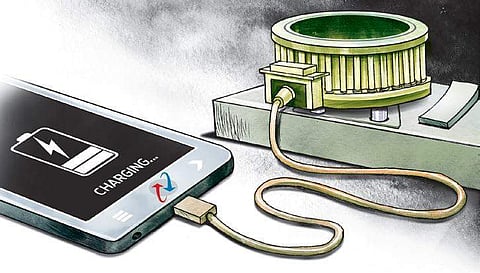

NEW DELHI: The Telecom sector in India has become data-driven in the last few years and fierce competition in the sector is the reason for the low data cost in the country, as per the economic survey 2021-22 released by the government on Monday.
The survey noted that reforms introduced in the past year in the telecom sector will boost 4G proliferation, infuse liquidity and create an enabling environment for investment in 5G networks.
The huge surge in data consumption is due to online education, work from home, interpersonal connection through social media, virtual meetings, and others.
“Total volume of wireless data usage increased by more than 7 folds from 4206 petabytes in Quarter 1 FY18 to 32397 petabytes in Quarter 1 FY22. Average wireless data usage in gigabytes (GB) per data user per month has also increased tremendously from just 1.24 GB per month in Q1:FY18 to a whopping 14.1 GB per month in Q1:FY22,” reads the survey.
According to the survey, the substantial increment in the number of mobile towers, reaching 6.93 lakhs towers in December 2021, reflects that the telecom operators have well realized the potential in the sector and seized the opportunity to build up an infrastructure. Internet penetration in the country is increasing steadily with internet subscribers increasing from 302.33 million in march 2015 to 833.71 million in June 2021.
“The relevance of the telecom sector has increased immensely. This can be gauged from the fact that the total telephone subscriber base in India has increased from 933.02 million in March 2014 to 1200.88 million in March 2021,” reads the survey.
The survey highlighted that the telecommunication sector is one of the most powerful sectors impacting the social and economic development of a country. Thus, a strong and responsive regulatory framework has kept the service access at reasonable prices. The government has taken further measures to ensure fair competition among service providers with the view to benefit the consumers. It includes rationalisation of Adjusted Gross Revenue in which non-telecom revenue was excluded from the definition of Adjusted Gross Revenue. Ø Bank Guarantees rationalized, in which huge reduction in Bank Guarantee requirements against License Fee and other similar levies. For auctions held henceforth, no Bank Guarantees will be required to secure installment payments and others.
Under the flagship BharatNet project, as of 27 September, 2021 5.46 lakh km Optical Fiber Cable has been laid, a total of 1.73 lakh Gram Panchayats (GP) have been connected by Optical Fiber Cable (OFC) and 1.59 lakh Gram Panchayats are service ready on OFC, noted the survey. Wi-Fi hotspots have been installed at 1.04 lakh Gram Panchayats of which services are being provided at 0.64 lakh Gram Panchayats, catering to more than 16.17 lakh subscribers with a data usage to the tune of 5670.42 TB per month.